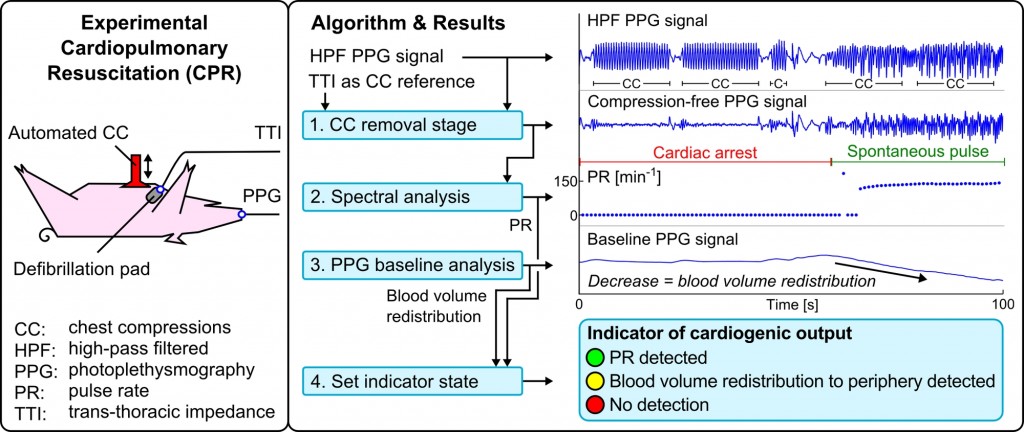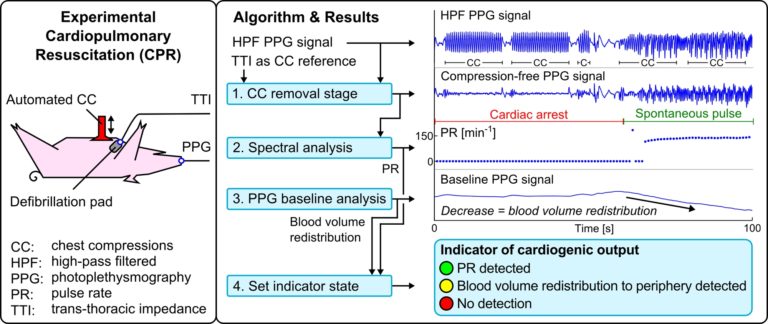Ralph Wijshoff, Antoine van Asten, Wouter Peeters, Rick Bezemer, Gerrit Jan Noordergraaf, Massimo Mischi, and Ronald Aarts, Eindhoven University of Technology, Philips Research, & St. Elisabeth Hospital, The Netherlands, Volume 62, Issue 3, Page:909-921

Detecting return of spontaneous circulation (ROSC) during cardiopulmonary resuscitation (CPR) typically involves manual palpation. Manual palpation requires interruption of the chest compressions and is challenging and time-consuming, even when performed by expert clinicians. Manual palpation may therefore lead to long interruptions in the chest compressions, which adversely affects CPR outcome. To support ROSC detection and potentially reduce the interruptions in compressions, we have developed an algorithm to detect cardiogenic output during compressions via a photoplethysmography (PPG) signal, based on automated-CPR porcine data.
The first stage of the algorithm estimates and removes the compression component from the measured PPG signal to obtain a compression-free PPG signal which estimates the spontaneous pulse waveform. The compression component is estimated via a harmonic series, of which the fundamental frequency is the compression rate derived from the trans-thoracic impedance signal measured between the defibrillation pads. The amplitudes of the harmonic components are obtained via a least mean-square algorithm. The second stage of the algorithm estimates the frequency spectrum of the compression-free PPG signal via an autoregressive model, and analyzes the relationship between the spectral peaks to determine the pulse rate (PR). In parallel, a third stage detects decreases in the baseline of the PPG signal to detect cardiogenic output. These decreases in baseline occurred in animals with ROSC, and are presumably caused by a redistribution of blood volume to the periphery.
The algorithm indicates cardiogenic output when a PR or a decrease in the PPG signal baseline is detected. The algorithm indicates cardiogenic output with 94% specificity and 69% sensitivity compared to the retrospective ROSC detection by nine clinicians. Results show that ROSC detection can be supported by combining the compression-free PPG signal with an indicator based on the detected PR and decrease in PPG signal baseline.
Keywords: autoregressive model, cardiogenic output, cardiopulmonary resuscitation, harmonic model, least (mean) squares, photoplethysmography, pulse rate, return of spontaneous circulation, spectral analysis, spontaneous pulse, trans-thoracic impedance
Research websites: www.tue.nl/sps and www.bmdresearch.nl

